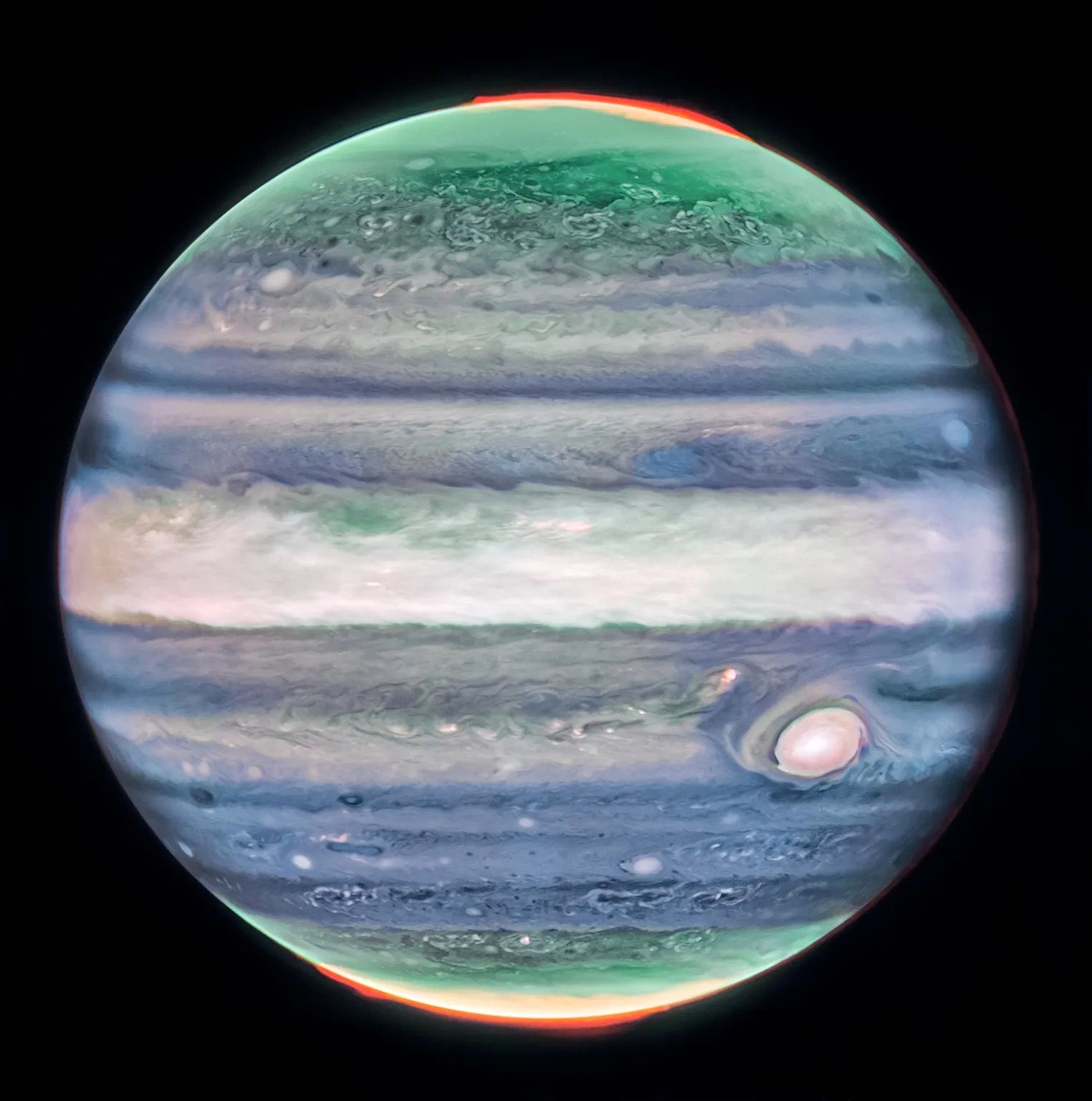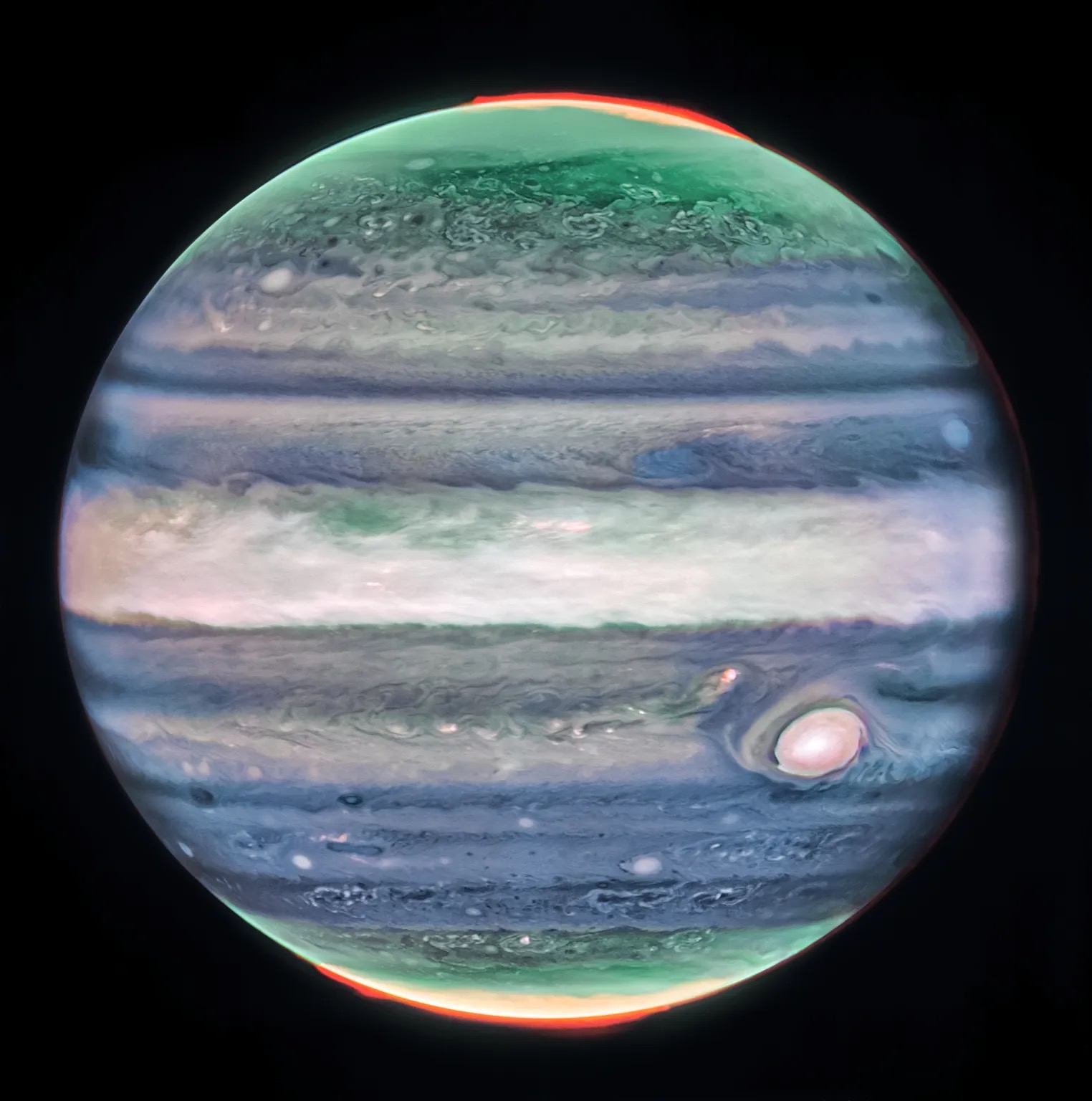Jupiter is the largest planet in our solar system, with a diameter of 89,000 miles.

Jupiter image taken by the James Webb Space Telescope. Credit: NASA.
Temperature: The average temperature at the top of clouds on Jupiter is –244° F (–153° C).
Escape velocity: To escape Jupiter’s gravity, you have to travel 133,100 miles (214,200 km) per hour, compared to 25,000 miles (40,200 km) per hour necessary to escape Earth’s gravity.
Other information: The Great Red Spot on Jupiter can be seen through a small telescope. This gigantic storm would hold two Earths. The Red Spot has been around for almost 400 years.
The planet has has between 80 and 95 moons. The four largest moons, Ganymede, Io, Europa, and Callisto, are called the Galilean moons because Galileo first saw them in 1610.
Jupiter has a “pizza moon.” Sulfur-spewing volcanoes cover the surface of Io. At different temperatures, sulfur appears in different colors, making Io look like a giant pizza.
It gives off more energy (in the form of heat) than it gets from the Sun and has four thin, faint rings.
In Roman mythology, Jupiter was the king of the gods and lord of the sky — a fitting name for our largest planet. Size: Eleven Earths would fit side by side across the face of Jupiter. It is the biggest planet in the solar system, and it has a diameter of 89,000 miles (143,000 kilometers).
Distance from the Sun: It is the fifth planet from the Sun. Its orbit is about 483 million miles (777 million km) away from the Sun. That’s five times farther than Earth’s orbit.
Orbit around the Sun: It takes Jupiter 12 Earth years to go around the Sun once. So on your twelfth birthday, Jupiter is in roughly the same place of the solar system as it was on the day you were born.
Rotation: Although Jupiter takes a long time to go around the Sun, it takes only 10 hours to spin on its axis one time. That’s less than half the time it takes Earth to spin once.
Surface: Jupiter does not have solid surface — its gaseous material becomes denser with depth.
Atmosphere: Jupiter’s atmosphere is made mostly of hydrogen (86 percent) and helium (14 percent). The colorful cloud bands we see are actually cloud layers. Darker clouds tend to be deeper in Jupiter’s atmosphere, while the lighter or white clouds are higher. The atmosphere also has giant lightning storms in its upper clouds.
You can get more facts on the planets in our solar system in each of the articles linked to below:

